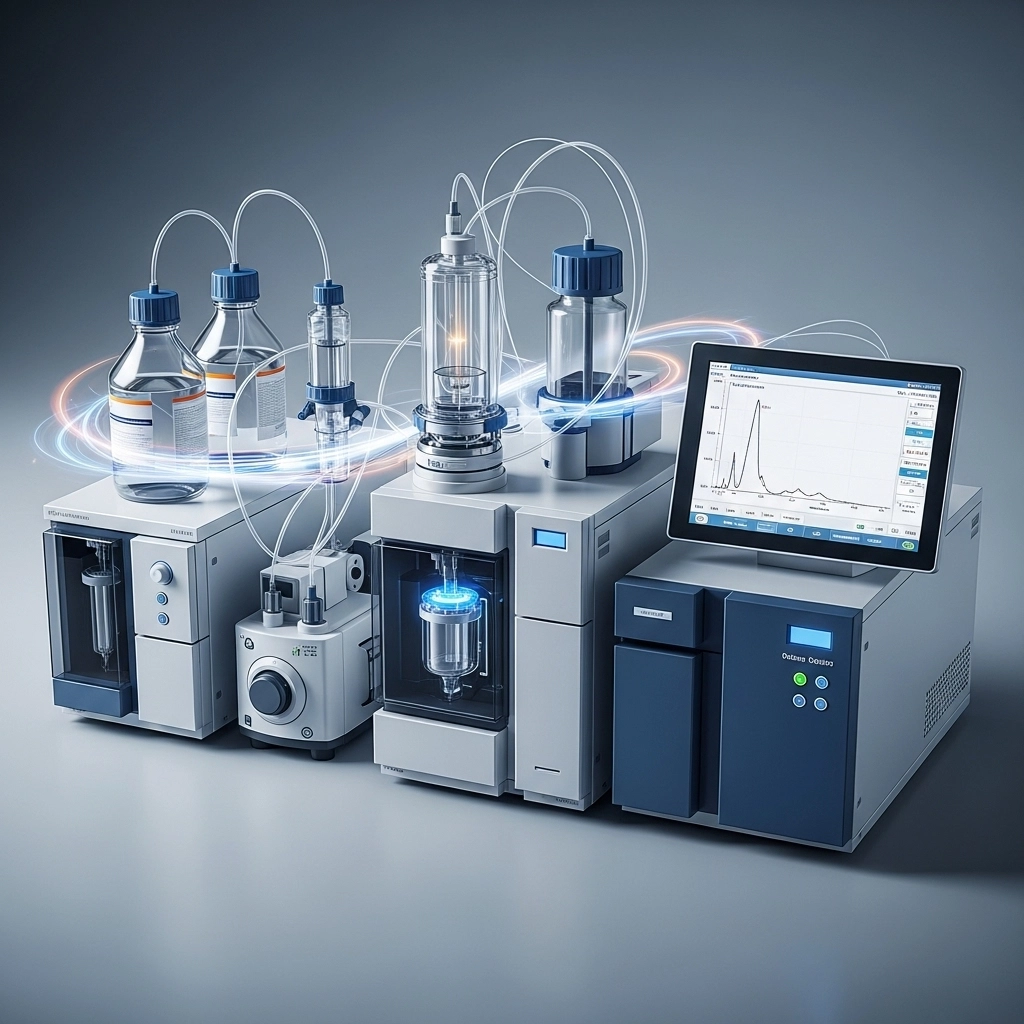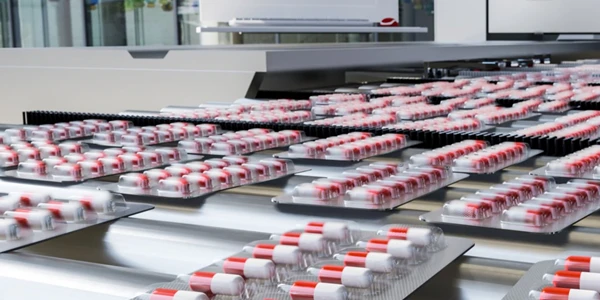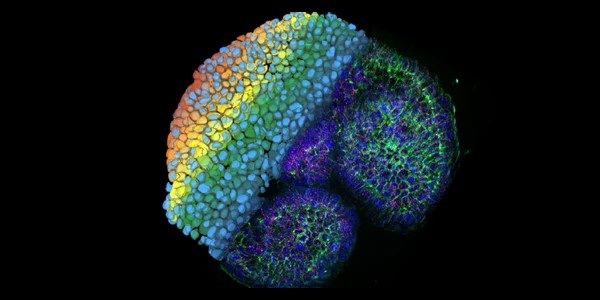
ImageFX (2025)
High Performance Liquid Chromatography (HPLC) has remained a cornerstone of analytical chemistry for decades, alongside Fast Protein Liquid Chromatography (FPLC). Its resilience, scalability, and unmatched versatility have made it essential in labs ranging from pharmaceutical research to food quality control. Now, with the evolution to Ultra High Performance Liquid Chromatography (UHPLC), users can achieve faster, more precise results without compromising data integrity.
In this guide, we explore the key principles of HPLC, the technological advancements behind UHPLC, and what modern labs need to know to choose and operate the right system.
What is HPLC? Fundamentals and Historical Perspective
HPLC is a technique used to separate, identify, and quantify components in complex mixtures. Its core components include:
Pump: Delivers the mobile phase at high pressure.
Injector: Introduces the sample into the system.
Column: Where separation occurs, packed with a stationary phase.
Detector: Identifies and quantifies compounds.
Evolution of HPLC
Originally known as High Pressure Liquid Chromatography due to early systems operating at 500 psi (35 bar), modern instruments now reach 6,000 psi (400 bar) or more. As performance increased, the name shifted to High Performance Liquid Chromatography.
Instrumentation advances include:
Improved pumps with consistent flow delivery
Sophisticated detectors
Advanced column technology
These innovations have set the stage for today's ultra-high performance systems.
Key Technical Concepts in HPLC Performance
Particle Size and Separation Efficiency
HPLC columns use spherical silica particles as the stationary phase. These vary in size:
| Particle Diameter | Benefits | Trade-Offs |
|---|---|---|
| 5 µm (standard) | Balanced performance | Moderate pressure requirements |
| <2 µm (UHPLC) | Higher resolution, faster runs | Significantly higher pressures |
As particle size decreases:
Surface area increases (better separation)
Required pressure increases exponentially
Pore Size Considerations
Pores in stationary phase materials affect how molecules are retained:
Smaller pores = More surface area (ideal for small molecules)
Larger pores = Better kinetics for large molecules (e.g., proteins)
Choosing the right pore size ensures efficient and accurate separations, especially in biopharma applications.
Pump Pressure: Backbone of System Performance
Modern HPLC pumps deliver stable flow at pressures up to 60 MPa (6000 psi), ensuring consistent retention times and reproducibility. UHPLC systems go further, supporting up to 120 MPa (17,405 psi), enabling:
Use of shorter, faster columns
Higher throughput with no loss in resolution
The Rise of UHPLC: Speed Meets Precision
Ultra High Performance Liquid Chromatography (UHPLC) emerged to overcome the limitations of traditional HPLC. By operating at much higher pressures, UHPLC systems enable:
Shorter analysis times with equal or better resolution
Smaller sample and solvent volumes (cost savings)
Enhanced sensitivity and reproducibility
Note: The term "UPLC" is a trademark of Waters Corporation, but is often used interchangeably with UHPLC in industry contexts.
Comparing HPLC vs. UHPLC
| Feature | HPLC | UHPLC |
| Max Pressure | ~60 MPa | ~120 MPa |
| Particle Size | ~3-5 µm | <2 µm |
| Analysis Speed | Moderate | High |
| Resolution | Good | Excellent |
| Cost | Lower | Higher (initially, lower long-term) |
Choosing Between HPLC and UHPLC: What Labs Need to Know
When deciding between HPLC and UHPLC, consider the following:
Sample complexity: UHPLC offers better resolution for multi-component samples.
Throughput needs: UHPLC significantly reduces runtime per sample.
Budget and infrastructure: UHPLC requires robust instrumentation and may demand upgraded lab infrastructure.
Regulatory environment: Some industries or tests may mandate traditional HPLC protocols.
Still unsure? Explore our full guide to chromatography systems.
Future-Proof Your Lab with HPLC and UHPLC
HPLC has stood the test of time, and UHPLC is the natural progression to meet modern analytical demands. From pharmaceuticals to environmental testing, both techniques play a vital role in ensuring accurate, fast, and reliable data.
Looking to upgrade your lab's chromatography capabilities? Discover the latest HPLC and UHPLC systems on LabX.
Frequently Asked Questions (FAQs)
What is the main difference between HPLC and UHPLC?
UHPLC operates at higher pressures and uses smaller particle sizes, enabling faster, higher-resolution separations than standard HPLC.
Is UHPLC more expensive than HPLC?
While UHPLC systems can be more costly upfront, they offer greater efficiency, which can reduce long-term operational costs.
Can I upgrade my HPLC system to UHPLC?
In most cases, no. UHPLC requires specially engineered hardware to handle high pressures and fine particle columns.
What are common applications of UHPLC?
UHPLC is widely used in pharmaceuticals, proteomics, food safety, and environmental analysis for rapid, high-resolution testing.










